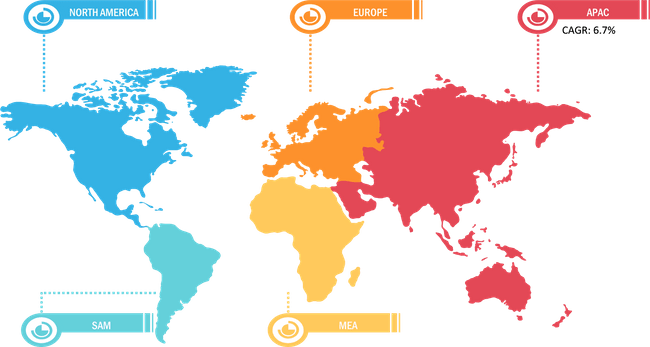Rise in Working Women Population Positively Influences Market
According to our latest market study, titled " Ready-to-Eat Food Market Forecast to 2028 – COVID-19 Impact and Global Analysis – by Product Type (Breakfast Cereals, Instant Soups & Noodles, Ready Meals, Snacks, Baked Goods & Confectioneries, and Others) and Distribution Channel (Supermarkets & Hypermarkets, Convenience Stores, Online Retail, and Others)," the ready-to-eat food market is projected to reach US$ 1,471.94 billion by 2028 from US$ 1,073.87 billion in 2022. It is expected to grow at a CAGR of 5.4% from 2022 to 2028.
Ready-to-eat food refer to food that consumers may securely eat without cooking. Ready-to-eat or ready-to-cook food is also termed fast food, which is effortless in preparation and can be eaten on the go. It typically involves ready meals, packed snack food, bread, pasta, breakfast cereals, fruit snacks, sauces, processed meat, protein bars, and more. The prime factor driving the growth of the ready-to-eat food market is the increased willingness to spend on such food and the lack of time to cook at home due to rapid urbanization.
During the recent decades, women's participation in labor has increased tremendously. According to the “International Labor Organization,” the female employment rate in Germany was 42.50% in 1990 and has increased to 54.91% by 2020. Similarly, the female employment rate in other countries, such as the US, France, Chile, and Mexico, has increased. This significant rise in women's employment is strongly influencing the growth of the ready-to-eat food market with the rising preference for convenience food.
Key players operating in the ready-to-eat food market are Nestlé SA; Conagra Brands Inc.; The Kraft Heinz Company; General Mills Inc.; CAMPBELL SOUP COMPANY; MTR Foods Pvt Ltd.; Hormel Foods Corporation; Tyson Foods, Inc.; JBS S.A.; and The Kellogg Company.
Impact of COVID-19 Pandemic on Ready-to-Eat Food Market
The COVID-19 pandemic affected economies and industries in various countries due to lockdowns, travel bans, and business shutdowns. The food & beverage industry suffered serious disruptions in supply chains and shutdowns of production plants in the initial phases of the pandemic. The shutdown of manufacturing plants in leading countries in North America, Europe, Asia Pacific, South & Central America, and the Middle East & Africa disturbed the global supply chains, manufacturing activities, delivery schedules, and sales of various essential and non-essential goods. However, in 2021, the economies started their operations, which positively impacted the global marketplace, particularly the ready-to-eat food market.
Moreover, manufacturers are permitted to operate with full capacity and can overcome the demand and supply gap. Consumers prioritize their health and actively search for healthy alternatives and fitness activities to prevent lifestyle-related illnesses. Retail stores, grocery stores, and supermarkets got permission to operate within the given time limit, aiding ready-to-eat food market.
Ready-to-Eat Food Market Breakdown – by Region

Ready-To-Eat Food Market 2028 | Size, Share, Growth Analysis
Download Free Sample
Ready-to-Eat Food Market Forecast to 2028 - COVID-19 Impact and Global Analysis By Product Type (Breakfast Cereals, Instant Soups & Noodles, Ready Meals, Snacks, Baked Goods & Confectioneries, and Others) and Distribution Channel (Supermarkets & Hypermarkets, Convenience Stores, Online Retail, and Others)
Ready-To-Eat Food Market 2028 | Size, Share, Growth Analysis
Download Free SampleReady-to-Eat Food Market Forecast to 2028 - COVID-19 Impact and Global Analysis By Product Type (Breakfast Cereals, Instant Soups & Noodles, Ready Meals, Snacks, Baked Goods & Confectioneries, and Others) and Distribution Channel (Supermarkets & Hypermarkets, Convenience Stores, Online Retail, and Others)
The report segments the ready-to-eat food market as follows:
Based on product type, the ready-to-eat food market is segmented into breakfast cereals, instant soup & noodles, ready meals, snacks, baked goods & confectioneries, and others. In terms of distribution channels, the market is segmented into supermarkets & hypermarkets, convenience stores, online retail, and others. Based on geography, the market is primarily segmented into North America, Europe, Asia-Pacific (APAC), the Middle East & Africa (MEA), and South & Central America (SAM).
Contact Us
Phone: +1-646-491-9876
Email Id: sales@theinsightpartners.com